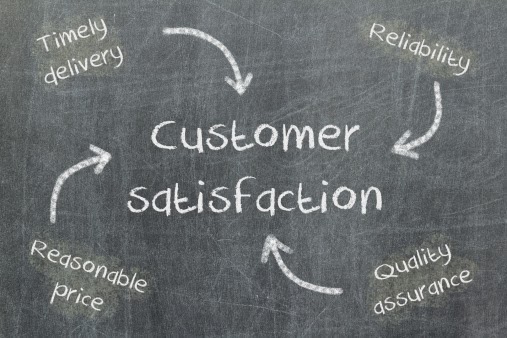
Jack Moore and Bob Misita
Contributing Writers
LeadsNearby
How can you get the most value and benefit from your customer’s opinion? To understand that, you have to know the difference between reviews, feedback and testimonials.
All three start with a business providing a service to a customer. All three end with a customer providing their opinion about that service. But that’s where the similarities end.
Each offers a different value. Find out which one:
• Improves the customer service experience
• Convinces leads surfaced through advertising of your quality work
• Generates new leads by expanding your digital word-of-mouth marketing
Feedback
What is it? When business owners and managers want to verify that their employees in the field are doing well, they often prompt customers to provide their opinions, or feedback, in one of two ways:
1. A simple question:
“How did we do?”
2. A mechanism that measures the customer’s level of satisfaction:
“On a scale of 1-10, how did our team do?”
How is it used? Businesses often use the information gathered to improve customer service through team training or re-training. Outside audiences do not see or benefit from this information.
How can I get the most out of feedback? Embrace customer feedback as a way to continually improve your teams’ service.
Testimonials
What are they? While written testimonials are still around, they were more fashionable 10 years ago. Today, the advent of social media has created an entire market for audio and video testimonials.
Typically positive in nature, testimonials are much more personal than feedback:
Written testimonials use your customer’s name and address
Audio testimonials use your customer’s voice
Video testimonials use your customer’s likeness and image
How are they used? Most businesses use testimonials in their marketing promotions. Used in a book, on a website or in an advertisement, they highlight the positive experiences past customers have had with your company. The drawback? Prospective customers know you hand-selected only the best testimonials to display as part of the sales process.
How can I get the most out of testimonials? Testimonials are valuable advertising tools, but understand that your future customers are smart enough to see them for what they are: carefully chosen opinions from your happiest customers. Use them wisely.
Endorsements, a subset of a testimonial, are paid advertisements for a business. In other words, a business owner pays someone to say nice things about the service. As such, they are regulated by the U.S. Federal Trade Commission and need to be posted as such. Most service business should not use reward based (incentivized) endorsements.
Reviews
What are they? A review is a third-party verified comment from a customer about your business’s service. It is a transaction between a customer and an external source such as Angie’s List, Yelp or Nearby Now. When a prospective customer sees your reviews, they know these opinions are true experiences written by people who’ve actually received your service.
Reviews are a natural extension of word-of-mouth marketing. As such, your happy customers will tell 10 of friends and neighbors about your service. Unhappy customers may tell up to 100.
Using this as your guide, there are two ways you can receive reviews.
1. Passive: When left to their own devices, customers may be motivated to leave a review about your service.
However, they typically do so because they have a negative experience they want to use to warn others.
2. Active: When you take control of the review process and ask your happiest customers to provide their comments, you increase the number of positive online reviews about your company. Using a pro-active marketing automation tool enables a business to benefit most.
How are they used? Most reviews end up on the third-party source’s website. That could work to your advantage if your target audience searches Angie’s List or Yelp for a service you offer but won’t help your branded company presence achieve direct results.
Since most people search Google when they are researching a need they have, you want to make sure your third- party vendor integrates your city-specific reviews onto your website so that Google sees them and ranks your branded website higher (one such tool is Nearby Now).
How can I get the most out of reviews? Use a third-party tool to pro-actively request reviews from your happiest customers and post them onto your website in a format that search engines recognize and see as coming from an unbiased external source.
When understood and used appropriately, feedback, testimonials and reviews can all benefit your business’ growth in a different way. For more information about reputation marketing, see 4-Evolutionary-stages-of-Reputation- Marketing.
Article provided by co-authors Jack Moore and Bob Misita @ LeadsNearby

